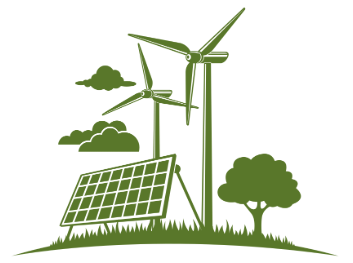Solar and wind surpassed coal in 2024
According to new data from Ember, solar and wind power produced more electricity than coal in the United States for the bulk of 2024. From January to November of last year, solar and wind provided more than 17 percent of U.S. electricity. For the first time, wind and solar exceeded coal power’s declining share of roughly 15 percent.
2024 was an unprecedented year for renewables in other ways as well. Ember’s data also shows a record-setting amount of solar installations in the United States last year. Their data also reports that 10 states now generate half or more of their electricity supply from renewables. 2024 also saw impressive investment in battery technology and continued reductions in price.
While coal power continues to decline in the United States, other countries have already closed their last coal-fired power plants. The United States is on pace to close half of peak coal capacity by 2026.
“Our nation can meet its energy needs many times over by harvesting the rays of the sun, the strength of the wind, and the heat of the earth,” said Johanna Neumann, Senior Director of the Campaign for 100% Renewable Energy at Environment America Research & Policy Center. “Our progress to date should give us the confidence to do even more.”
World Wetlands Day
World Wetlands Day is celebrated on February 2nd every year. This day serves to raise awareness about wetlands’ vital role in our ecosystem and promote their conservation and sustainable use.
The history of World Wetlands Day dates back to February 2nd, 1971, when the Convention on Wetlands of International Importance, also known as the Ramsar Convention, was signed in Ramsar, Iran. The convention was created to address the rapid loss of wetlands worldwide and promote their conservation and wise use.
In 1997, the United Nations officially recognized World Wetlands Day as an International Day of Importance. Since then, it has been celebrated annually on February 2nd to raise awareness about wetlands’ critical role in maintaining biodiversity, regulating water cycles, and mitigating the impacts of climate change.
Wetlands are areas where water is the primary factor controlling the environment and associated plant and animal life. They include swamps, marshes, rivers, lakes, and other water-rich areas. Wetlands are essential for many species of plants and animals, provide important ecosystem services such as water filtration and flood control, and help regulate the Earth’s climate.
Unfortunately, wetlands worldwide are under threat from various factors, including habitat loss, pollution, and climate change. World Wetlands Day serves as an opportunity to raise awareness about these threats and promote the need for their protection, restoration, and sustainable management.
Respyre’s moss concrete combines environmental sustainability and biodiversity to offer a low-maintenance solution for urban greening.
Respyre’s moss concrete is an innovative building material that aims to bring urban greening solutions to city environments. Designed with both environmental sustainability and biodiversity in mind, this unique concrete offers practical advantages for city planners and architects looking to integrate nature into the built environment. By fostering moss growth, the material offers a low-maintenance, eco-friendly option for urban greening that can be applied to both new constructions and existing structures.
Respyre’s moss concrete is “bioreceptive,” meaning it is specifically designed to support biological life, particularly moss. Once the concrete hardens, its surface provides an ideal substrate for moss to grow. The material’s micropore structure supports the growth of moss rhizoids, which are similar to roots but non-destructive. Unlike plants with roots that can crack or degrade concrete over time, moss remains affixed to the surface without compromising the structural integrity of the building.
The bio-receptive nature of the concrete is critical for supporting biodiversity in urban areas. By promoting the growth of moss, Respyre’s concrete helps create small habitats for insects, fostering local biodiversity and enhancing the ecological footprint of city spaces.
Moss offers significant environmental advantages in urban areas. It absorbs fine particulates from the air, helping to reduce air pollution in densely populated cities. Additionally, moss retains moisture, which contributes to cooling through evapotranspiration, a natural process where water is transferred from the surface to the atmosphere, reducing surrounding temperatures. The cooling effect can be especially beneficial in cities, where heat islands often lead to higher energy consumption for air conditioning.
Respyre’s moss concrete represents a breakthrough in sustainable building materials, offering a low-maintenance, cost-effective solution for urban greening solutions. Its unique bio-receptive properties enable moss growth, improving air quality, reducing urban heat, and promoting biodiversity. As case studies and real-world applications have demonstrated, this innovative material has the potential to transform cities by integrating nature into the built environment. With growing interest from architects, city planners, and environmental advocates, Respyre’s moss concrete could play a key role in the future of urban sustainability.

